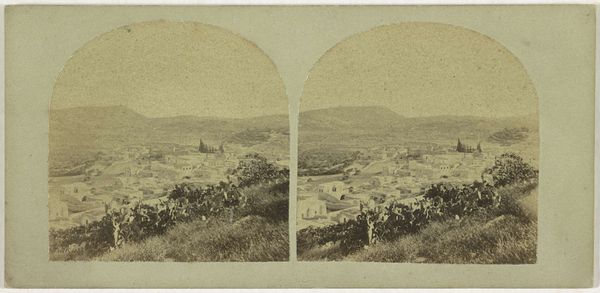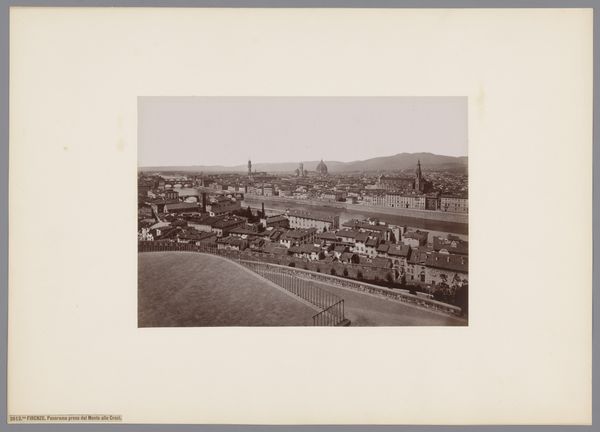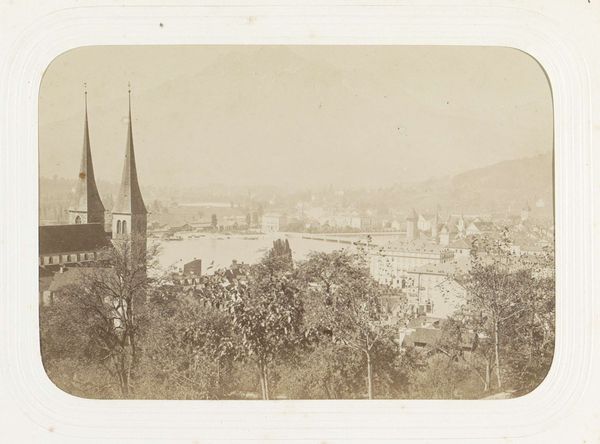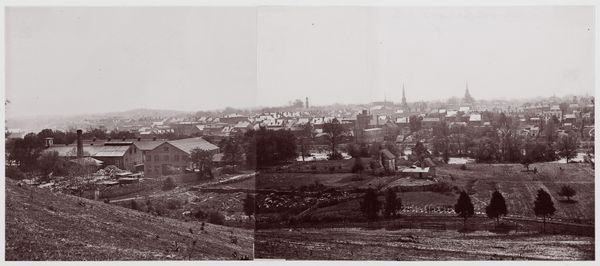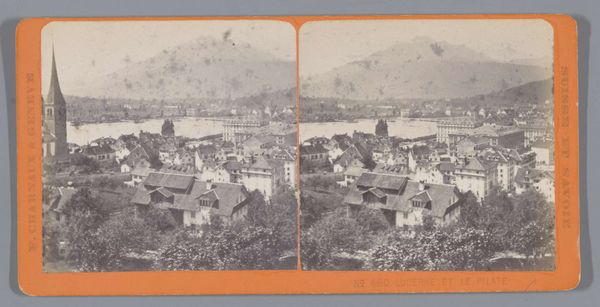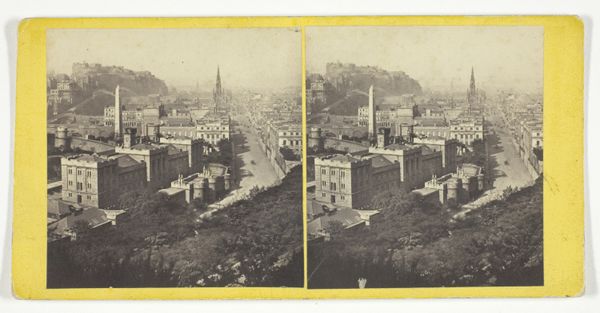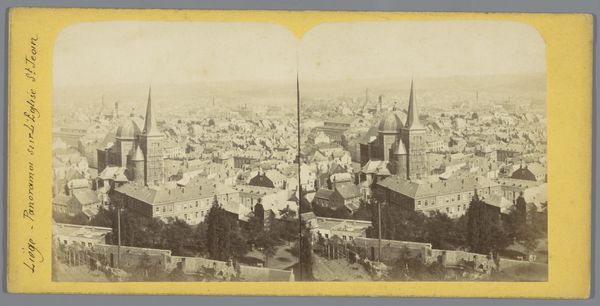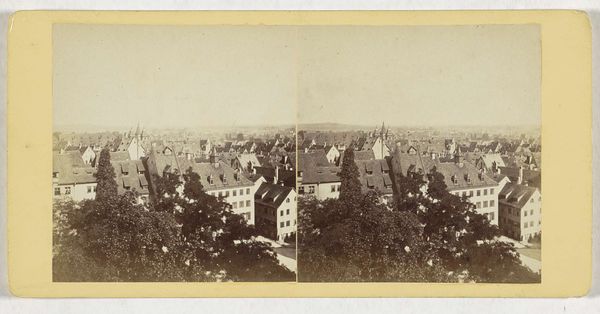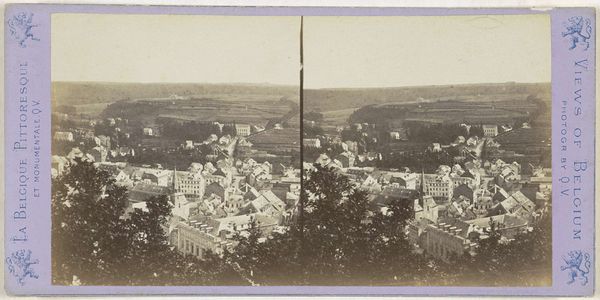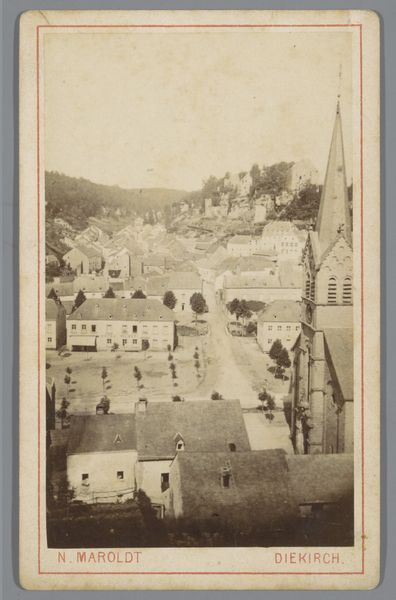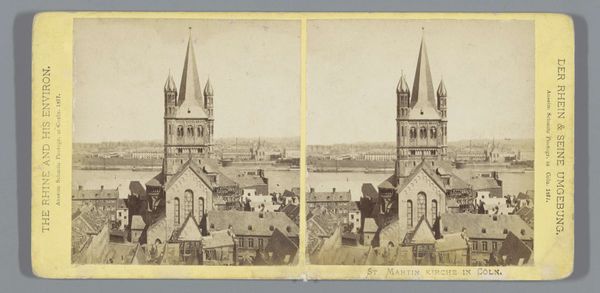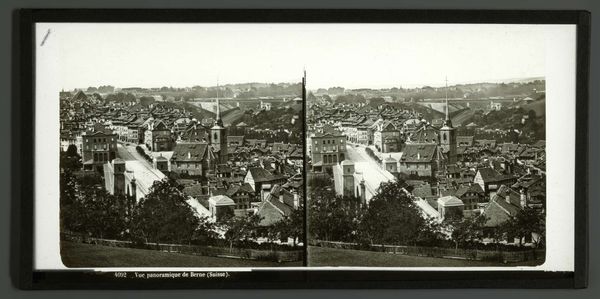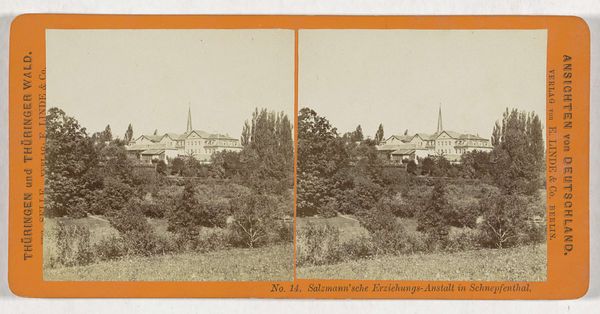
Dimensions: height 87 mm, width 175 mm
Copyright: Rijks Museum: Open Domain
Editor: Let’s turn our attention to "Goslar, gezien vanaf de Zwinger," a photograph attributed to Hermann Selle, created sometime between 1868 and 1890. What strikes you about it? Curator: The subdued tonality imbues the entire scene with a kind of dreamlike nostalgia. It’s an intriguing study in atmospheric perspective, how the twin towers punctuate the skyline. Tell me, what process do you see at play here? Editor: Well, Selle operated a photography studio, producing images to be distributed as souvenirs and views of Germany. It’s a photomechanical print of Goslar. I wonder about the division of labor to produce these prints. Did Selle shoot the original, or simply copy another photographer's image for reproduction? Curator: Regardless of who took the shot, the meticulous layering creates depth, directing the eye toward the imposing architecture. The visual language hinges on stark contrast, the interplay between light and shadow—a structural element common within German art of this era. Editor: True, yet considering the production context is crucial. Think about the materiality itself. This is not a unique piece meant for display, but a reproduced object, made to be distributed for consumption, inviting tourists and consumers alike. Curator: The city is, admittedly, rather appealing. What kind of visual tropes, design techniques might Selle have relied on in order to entice its consumers? Are these even worthy questions given this "souvenir’s" medium? Editor: Oh, without a doubt, we need to interrogate his decisions about staging, choice of view. I find myself considering the human labor invested here and reflecting on who owned these landscapes and cityscapes? And which individuals didn't appear? Whose presence were considered less important or marketable? Curator: Your reflections on material production have opened an entryway to other facets of the composition I had not immediately thought to consider. I initially thought that the image drew the viewer to seek out patterns and contrasts and perhaps to understand spatial planes. Editor: And understanding that wider landscape can help us fully appreciate even those photographic nuances. Thank you.
Comments
No comments
Be the first to comment and join the conversation on the ultimate creative platform.
